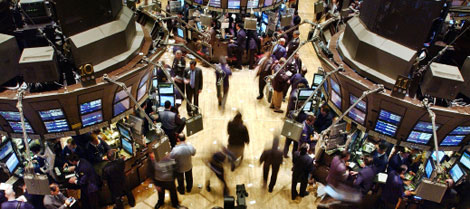One of the oddest things about yesterday’s reaction to news from the Federal Reserve of a 75 basis point increase in interest rates was that the market initially rallied.
Yesterday, September 21, from 3801 at 10:25 a.m.New York time, the Standard & Poor’s 500 moved up to 3895 at 2:40 p.m. right after the Fed released its news.
And, then, markets began a retreat with the S&P 500 closing down 1.71% on the day.
It’s almost like the markets constructed one story–relatively positive–in the immediate aftermath of the news. And, then, upon further consideration, built a different much less positive story to the close of the day.
Make that “exactly” instead of “almost like.”
The initial story that led to the move up in stocks went something like this: The 75 basis point interest rate increase took the Fed that much closer to the end of the cycle of interest rate increases. And therefore the Fed’s aggressive move was actually good news.
Upon further through, however, after looking at the Dot Plot projections for a higher end of the year benchmark interest rate–4.4% was the median projection up from 3.4% in June–and slower economic growth–1.2% for 2023 down from a projected 1.7% in June—the market retreated on what sure sounded like higher and weaker for longer.
That negative story is still in force today, September 22. At 2 p.m. the S&P 500 was down another 0.78%.
If you’re looking for one more Bear Market rally in 2022, you’re thinking that the positive story that briefly took the S&P 500 higher in the earlier part of September 21, will capture greater market share in the coming weeks.
I think it will. Not so much because there’s any great truth to the story–I think it’s mostly wishful thinking–or that we’ll get significant new facts to support it, but because it will be a rationale to justify buying based on computer-driven technical analysis of short-term stock trends.
The close at 3790 on September 21 put the S&P 500 very close to the June 16 low at 3666.77. And left the index well below the August 16 high at 4306.
If you’re a computer at one of the big Wall Street money houses looking to find a profitable trade, we’re at an “interesting” point. Given a factoid or two, and the move into the more positive months for stocks at the end of the year after the historic nadir of September, and then buying for a short-term rally looks attractive from current price levels. And every drop toward the Jue low makes this trade a little more attractive.
n
And the factoid cupboard isn’t exactly bare (or bear, if you prefer.) There’s no Fed meeting until November 2 to hang over sentiment. And we don’t get the next Dot Plot projections to remind us of a downward trend in the economy until the December 14 meeting. The next CPI inflation report (for September) is scheduled for release on October 13 and it’s likely to show a continued drop in headline inflation.
Earnings reports for the third quarter–with the first reports of significant coming from Wells Fargo (WFC) and JPMorgan Chase (JPM) on October 13 and 14, respectively, are likely to be a mixed bag but analysts have been cutting their estimates for the quarter in recent weeks and that reduces the change of negative surprises and increases the possibility of a positive surprise. For example, 8 analysts have cut their estimates for Nvidia (NVDA), a key technology bellwether stock, in the last month. For the quarter, to be reported on November 11, the current estimate is just 45 cents a share. That’s down from $1.01 last year–but more importantly for any rally possibility down from 70 cents a share a month ago. That’s a drop of almost 36% in earnings projections. Think that might set up a positive surprise for the quarter?
I don’t think the odds of another Bear Market rally before the end of 2022 are strong enough to encourage me to put money to work. But I do think the odds do favor the possibility of that kind of rally. And, given what we can see coming in 2023, I still intend to sell into that rally–if it arrives. I don’t think this Bear Market ends without a test of that June low.


